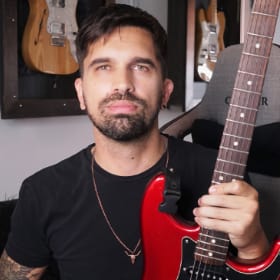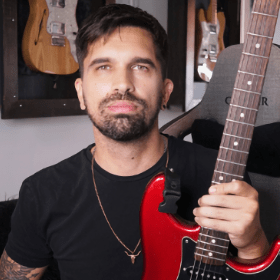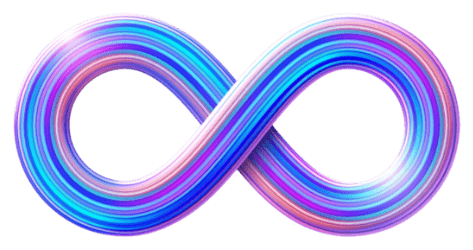now playing:
- main
- 1
- For members2
- For members3
- For members4
- For members5
- For members6
- For members7
more...
More
- Indie Rock III: PixiesLEVEL 2In this lesson I will cover the style of Pixies, which is one of the most influential indie rock bands.
- Indie Rock: The StrokesLEVEL 4Welcome to my new series inspired by Indie Rock bands. This lesson will cover style of "The Strokes".
- Indie Rock IILEVEL 4Lesson covering the style of band "Arctic Monkeys".
- Instrumental Rock IVLEVEL 4Learn to build melodies and riffs over the straight rock rhythm.
- Kings Of Leon StyleLEVEL 2Lesson covering the interesting composing and guitar arranging style of Kings Of Leon.
- Grunge IV - MudhoneyLEVEL 4In this lesson I covered the style of Mudhoney, an alternative band formed in 1988.
- Winter Tune IVLEVEL 6The fourth part of the epic Winter Tune series.
- Lemmy's Legacy IVLEVEL 4Fourth lesson covering the style of Lemmy's compositions.
- Modern Fusion LicksLEVEL 89 cool Fusion licks with outside/inside & chromatics
more
easier
Feedback
 Gabriel Leopardi25th April 2012
Gabriel Leopardi25th April 2012Thanks Moleman.

 moleman25th April 2012
moleman25th April 2012Very interesting and cool composition dude. I think it's really cool how you can use a more uncommon tuning and sound, but keep it accessible and melodic.
 Gabriel Leopardi24th April 2012
Gabriel Leopardi24th April 2012Thanks Ben!!

 Ben Higgins24th April 2012
Ben Higgins24th April 2012What a great composition, Gab !

Practicing Peers
- Total views: 0
- Member views: 0
- Guest views: 0
- Lesson
- My notes
Hello guys!! Welcome to the fourth lesson of this series based on the Genre “Indie Rock”.
If you missed the previous lessons you should check what wikipedia says about “Indie Rock”
“Indie rock is a genre of alternative rock that originated in the United Kingdom and the United States in the 1980s. Indie rock is extremely diverse, with sub-genres that include lo-fi, post-rock, math rock, indie pop, dream pop, noise rock, space rock, sadcore, riot grrrl and emo, among others.”
In the previous lesson I covered the style of Pixies, and this time I will cover the style of another very important and influential band called Sonic Youth. Sonic Youth is an American rock band from New York City, formed in 1981. Their most recent line-up consisted of Thurston Moore (guitar and vocals),Kim Gordon (bass, vocals, and guitar), Lee Ranaldo (guitar and vocals), Steve Shelley (drums), and Mark Ibold (guitar and bass).
Music Style:
They have been labelled with many different style and that’s because of the wide spectrum of their music. They are considered as a big noise rock exponent and also some people says that they are the first step in the growth of the alternative and indie rock movements in the 90’s. Something very important from them is that they were praised for having “redefined what rock guitar could do”. How? using a wide variety of unorthodox guitar tunings, and preparing guitars with objects like drum sticks and screwdrivers to alter the instruments' timbre.
Tonality & Chord Progression:
The use of alternative tuning makes them use chords that aren’t very found in rock music. The tune is in C major but you’ll find chords that don’t belong to that tonality. The reason why they appear is concept that in theory is called modal interchange that means that you borrow a chord from the parallel tonality. The main progression is C and Eb. Both chords are major, and the second chords is formed starting from the minor third of C. The major tonality’s correct chord would be E minor but in this case we change it from the C minor tonality 3rd chord that is Eb major. This type of ideas give Sonic that characteristic vibe, as well as their tunings, riffs, tone and vocals.
Techniques:
As in most of these bands, the guitar technique is easy since everything is more based on tone and progressions, always more concentrated in creating particular atmospheres than in the difficulty or what they are playing. We will use mostly chords and easy melodies on this one so you will find it suitable for every level.
Sound:
I used a Pod Hd 500 emulating a Vox Ac30 combo amp with a small quantity of drive and a tube screamer also emulated to make it sound noisier. If you want the tone you can ask for it at my personal board. My guitar is a Gibson Les Paul Studio. The drums is from the Hyper Canvas Vsti and the bass is a refill from Reason called Classic Bass sounds.
Tuning:
As we said earlier, they are obsessed with tunings. They use lots of alternative tuning in their music. You can check this thread where I posted some of their most used progressions: HERE.
For this tune I used: C – G – D – G – C - D
Well guys! Let's start rocking. Don't forget to check the previous Indie Rock Lessons: The Strokes Style, Artic Monkeys Style and Pixies Style.

From this course:
- Indie Rock: The StrokesLEVEL 4Welcome to my new series inspired by Indie Rock bands. This lesson will cover style of "The Strokes".
- Indie Rock IILEVEL 4Lesson covering the style of band "Arctic Monkeys".
- Indie Rock III: PixiesLEVEL 2In this lesson I will cover the style of Pixies, which is one of the most influential indie rock bands.
- Kings Of Leon StyleLEVEL 2Lesson covering the interesting composing and guitar arranging style of Kings Of Leon.
Scrubbing / forward / rewind: arrow right, arrow left keys
Jump to start: Home or `s` , you can also click/tap the lesson part again (the numbers above player)
Go to next part: PageUP or End.
Volume: ArrowUp / ArrowDown keys
Go to any part: Number keys (combinations also possible)
Pause or play: `k` or space key
Fullscreen: `f`, esc to close
Increase / decrease speed : `+` or `-`
Jump to start: Home or `s` , you can also click/tap the lesson part again (the numbers above player)
Go to next part: PageUP or End.
Volume: ArrowUp / ArrowDown keys
Go to any part: Number keys (combinations also possible)
Pause or play: `k` or space key
Fullscreen: `f`, esc to close
Increase / decrease speed : `+` or `-`







